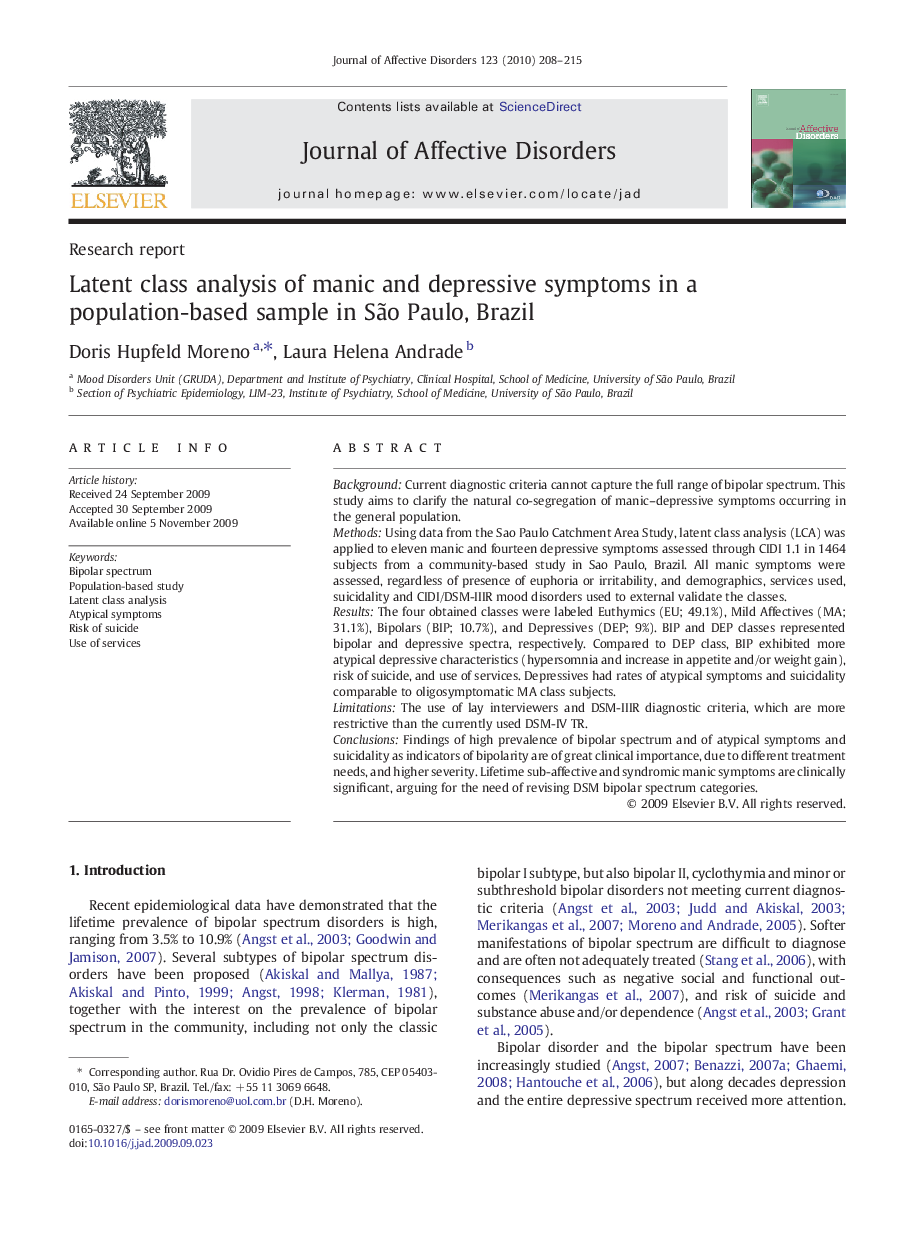| کد مقاله | کد نشریه | سال انتشار | مقاله انگلیسی | نسخه تمام متن |
|---|---|---|---|---|
| 6236475 | 1608197 | 2010 | 8 صفحه PDF | دانلود رایگان |

BackgroundCurrent diagnostic criteria cannot capture the full range of bipolar spectrum. This study aims to clarify the natural co-segregation of manic-depressive symptoms occurring in the general population.MethodsUsing data from the Sao Paulo Catchment Area Study, latent class analysis (LCA) was applied to eleven manic and fourteen depressive symptoms assessed through CIDI 1.1 in 1464 subjects from a community-based study in Sao Paulo, Brazil. All manic symptoms were assessed, regardless of presence of euphoria or irritability, and demographics, services used, suicidality and CIDI/DSM-IIIR mood disorders used to external validate the classes.ResultsThe four obtained classes were labeled Euthymics (EU; 49.1%), Mild Affectives (MA; 31.1%), Bipolars (BIP; 10.7%), and Depressives (DEP; 9%). BIP and DEP classes represented bipolar and depressive spectra, respectively. Compared to DEP class, BIP exhibited more atypical depressive characteristics (hypersomnia and increase in appetite and/or weight gain), risk of suicide, and use of services. Depressives had rates of atypical symptoms and suicidality comparable to oligosymptomatic MA class subjects.LimitationsThe use of lay interviewers and DSM-IIIR diagnostic criteria, which are more restrictive than the currently used DSM-IV TR.ConclusionsFindings of high prevalence of bipolar spectrum and of atypical symptoms and suicidality as indicators of bipolarity are of great clinical importance, due to different treatment needs, and higher severity. Lifetime sub-affective and syndromic manic symptoms are clinically significant, arguing for the need of revising DSM bipolar spectrum categories.
Journal: Journal of Affective Disorders - Volume 123, Issues 1â3, June 2010, Pages 208-215